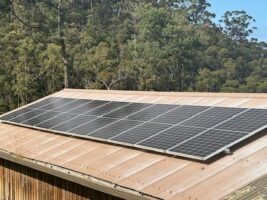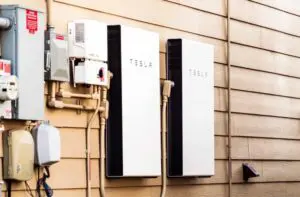The ACT government, fresh from excluding gas from two newly created suburbs, is now aiming to electrify all of Canberra and focus on existing homes via a new partnership with Choice.
The deal with Choice will help home owners identify what appliances can be switched to electric and outlines what deals are available, the estimated cost of conversion and potential savings.
“The ‘make your next choice electric’ tool provides Canberrans with access to free, independent advice from CHOICE, which usually sits behind a paywall, to help households choose the best energy efficient options to replace old or broken gas appliances,” says energy minister Shane Rattenbury.
“An average household of four people, who live in a typical medium-sized Canberra home built before 1996 with all gas appliances, could save over $2,500 a year in energy bills if they transition to efficient electric appliances.”
Convincing consumers to give up gas
The ACT has a plan to quit gas by 2045, a project that has seen the territory remove the once-mandatory requirement for new developments to include gas infrastructure and ban new ICE cars by 2035.
It already has one all-electric suburb, Ginninderry Estate, and a new greenfield development in Gungahlin, Jacka, is set to be the second.
More difficult will be retrofitting Canberra’s existing housing stock, which is where the Choice campaign comes in.
Rattenbury says they recognise there is an upfront cost for homeowners, but says this program is about educating Canberrans for the time when their existing appliances need replacing, not about encouraging an immediate switch.
“Over the next 20 years, we are asking Canberrans to make their next choice electric. These steps do not all need to be taken at once, and there is no immediate rush – consumers can replace appliances at a time that is right for them,” he says.
The ACT is piloting a project to electrify an existing suburb. The ‘Suburb Zero’ trial would use $20 million of federal government funding and $50 million of private sector capital for a two-year, opt-in program, to give Canberran households a 20-25 per cent saving per year on energy bills.
The challenges in electrifying existing housing and apartment stock cover the gamut of social, technological, regulatory and economic, so the trial will test different ways to meet these challenges and also demonstrate different types of technologies.
Senator David Pocock, who is backing the trial alongside Rewiring Australia’s Saul Griffith, says on his website it could be the template for a national electrification program costing $12 billion over five years, or about the sum the government spends on fossil fuel subsidies each year.
Gas lobby running scared
Canberra’s efforts to kick gas has already struck fear into the hearts of gas lobby groups. The Australian Pipelines and Gas Association (APGA) used numbers from a pilot — inaccurately — to suggest that the cost of removing gas from the 5.1 million dwellings currently using it was $66 billion.
The figure is six-times higher than that estimated by Rewiring Australia, having multiplied the $13,000 per household figure in a 1000-home ACT technology trial across all 5.1 million dwellings.
And they should be worried: New South Wales (NSW) and Western Australia are the latest locations where towns and suburbs are going gas-free.
In February, NSW launched an $8 million pilot to decarbonise existing homes in three communities in the state, one urban, one regional and one remote.
The pilot will use public-private partnerships to test cost effective ways to upgrade to zero emissions homes in an urban, regional and remote community.
And Esperance in southern Western Australia had its gas supply shut off at the end of March, with the town almost fully electrified by the deadline.
Other pilots are also happening in Tasmania and South Australia.










